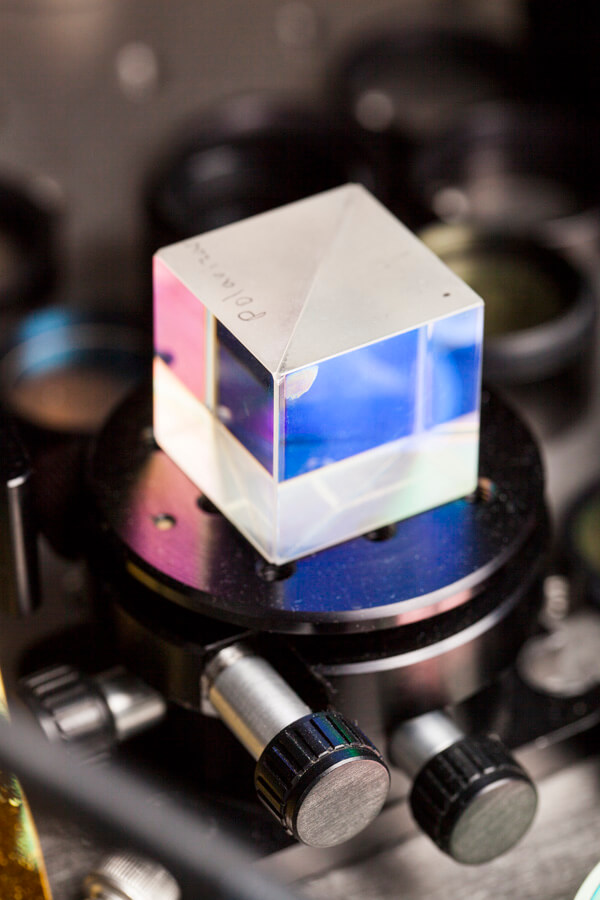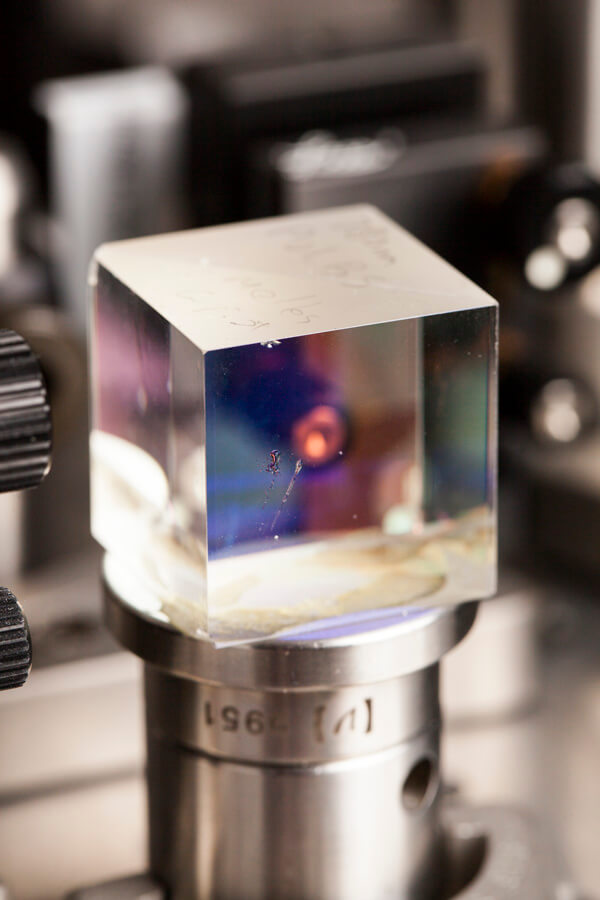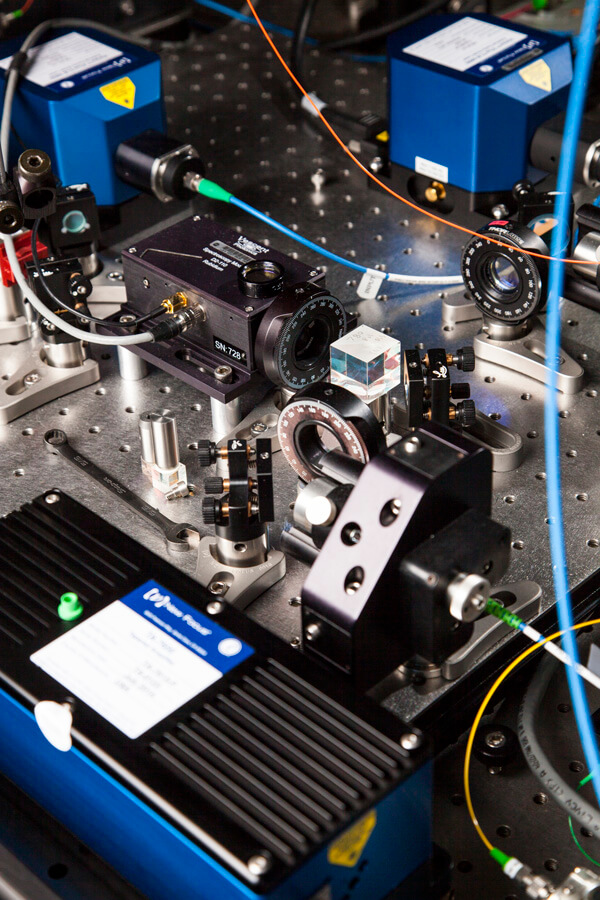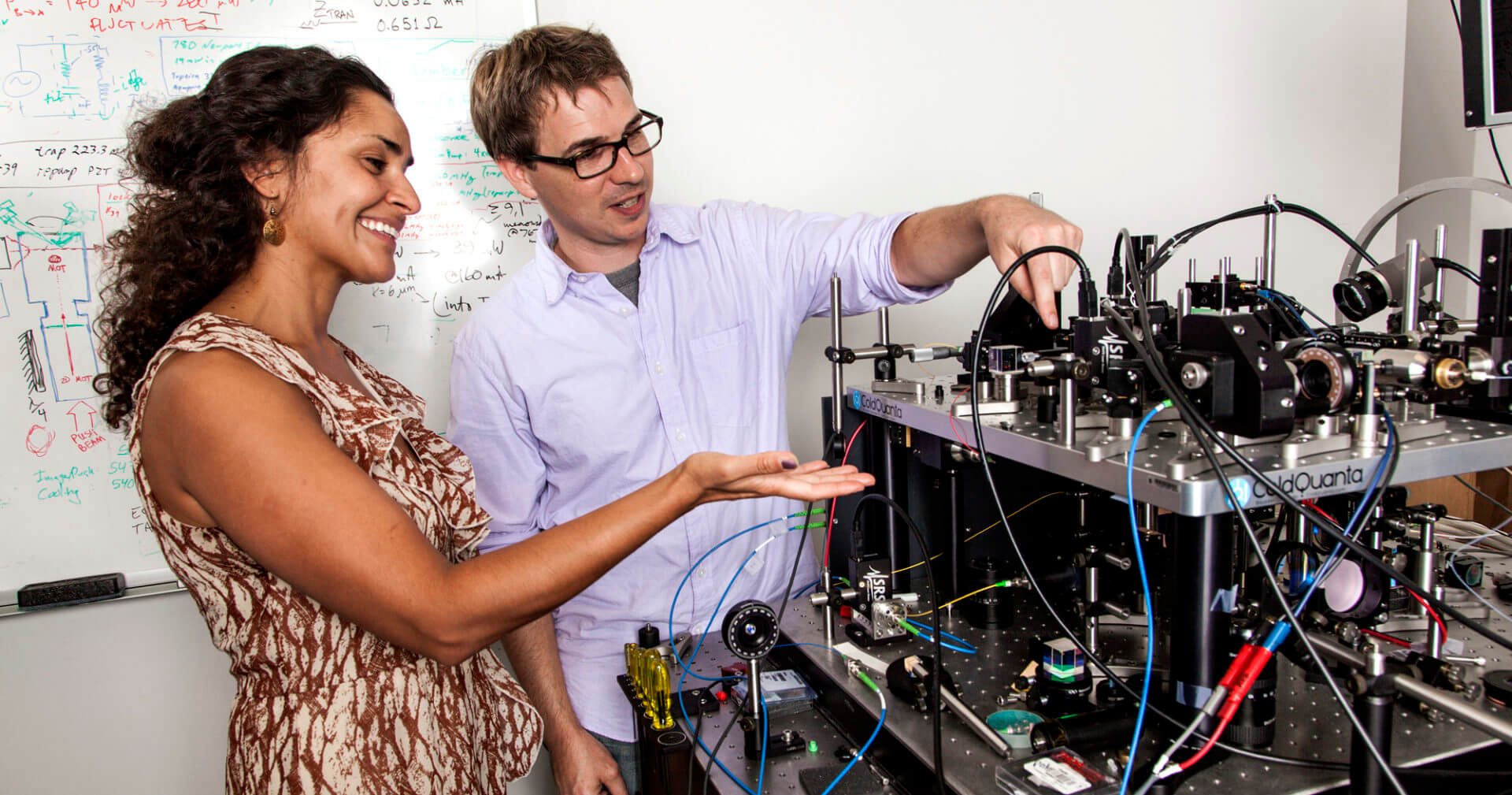A Quantum State Of Mind




Anita Sengupta has a mission: to build the coldest spot in the universe.
“Everyone thinks space is cold. It has a temperature of about 4 Kelvin,” said Sengupta, M.S. ’00, Ph.D. ’05 in Aerospace & Mechanical Engineering. “But the temperature that we’re going to get to is 100 x 10-12 Kelvin, so it’s a trillion times colder than space is. Temperatures so low they can only be obtained using a technique called laser cooling in a microgravity environment.”
At this temperature so close to 0 Kelvin, or absolute zero, atoms stand nearly still. And that’s exactly the point: When matter is cooled to just above absolute zero, which is essentially zero energy, it takes on a completely different state called “matter waves.” When the gas is made of fundamental particles called bosons, you form something called a Bose-Einstein condensate (BEC), which is another state of matter. In this quantum state, where most atoms of the same kind have the same level of energy down to an identical spin of their electrons, the energy wave from each atom overlaps and therefore amplifies, resulting in a cloud of atoms that can be seen with the naked eye. By studying matter in this state, scientists can gain insight into how the universe was formed.
“You can see the ultra-cold atom cloud in the lab experiments,” said Sengupta. “It’s like a little mini-universe. That’s the interesting part, because a BEC may be similar to how the universe behaved thermodynamically when it first formed. It’s a ball of gas all at the same quantum state, and then it starts to expand.”
Sengupta is the project manager in charge of building the Cold Atom Laboratory (CAL), a NASA project being developed by the Jet Propulsion
Laboratory (JPL) in Pasadena, California. CAL is an instrument about the size of a freezer that will be transported in a SpaceX Dragon Capsule to the International Space Station (ISS) late in 2016. Its mission is to understand the behavior of the universe’s tiniest particles by creating a Bose-Einstein condensate, a state of matter first suggested by Satyendra Nath Bose and Albert Einstein in the 1920s, in which elementary particles like photons can behave as both particles and waves.
The wave nature of these particles, however, can only be observed at extremely cold temperatures. Although some experiments on matter waves are already being done on Earth, conducting the tests in the ISS, away from the planet’s gravity and magnetic fields, will allow scientists to experiment in a lab environment a magnitude or two colder, and therefore that much closer to the elusive zero-energy state.
Laser beams will be fired at rubidium (Rb) and potassium (K) atoms from all sides inside an evacuated glass chamber. The lasers are precisely tuned to the resonance frequency of Rb and K; as a result, the light actually pushes on the atoms, slowing them down. (“You can of think of laser cooling as a type of optical molasses,” Sengupta explained.) Exposing the atoms to radio frequency radiation cools them further. What’s left is a cloud of bosons at a temperature of almost absolute zero, making the CAL the coldest spot in the universe.
CAL’s team of flight investigators includes three Nobel Laureates. One experiment will look at how the universe’s complexity evolves from the quantum scale. Never before has an experiment been performed that could allow probing of physics at the Planck scale. Another experiment will look into proving (or disproving) Einstein’s equivalence principle (is gravity a force or a property of space-time geometry, as he theorized?), as well as answering the mystery of why a BEC is able to slow down light. Although light can be slowed a bit in a vacuum, when put through a BEC it slows orders of magnitude lower.
“Normally it would be instantaneous,” said Sengupta, “but it also comes out with the exact same quantum state [as the BEC], so it has the possibility to do something called quantum computing. You’re able to encode the information into the BEC and have it come out the other side the exact same way.”
If this concept rings a bell, you’re probably a Star Trek fan—it’s the same principle behind the transporter, which encodes information on one end and spits crewmembers out on the surface of an alien planet. Perhaps CAL and space missions like it, focused on elementary particles instead of distant planets, will eventually enable much more extensive exploration of the Final Frontier.
For now, however, Sengupta is focused on the mission at hand.
Her last project entailed designing the parachute deployment system that would safely (and gently) deliver the $2.5 billion Curiosity rover onto the surface of Mars. CAL will be delivered to the ISS via a much less dramatic, and relatively risk-free, SpaceX shuttle trip and hand-installed by an astronaut. But this project has its own set of challenges, including designing within a tight space, developing a thermal system that will work in microgravity and maintaining the precise optical alignments necessary for the instruments’ lasers. Sengupta’s team of engineers, which includes several other USC alumni, is enthusiastically tackling them all.
“That’s actually the fun part,” she said. “No one wants things to go wrong, but the minute you have a problem to solve, everyone just jumps on it and comes up with a solution for it. There is an infinite amount of solutions to every problem. It’s enjoyable to find what that is.”
When she’s not solving experimental quantum equipment problems, Sengupta teaches for USC Viterbi’s Department of Astronautical Engineering, where she is a research associate professor. She looks forward to tackling new challenges the future will bring—landing on Venus perhaps?—and contributing to what she believes is NASA’s primary purpose: to inspire the next generation of engineers and scientists.
“Whether it’s wondering if there are aliens out there, or they want to be an astronaut, or they love the way other planets look, [a lot of people] become interested in science and technology because of the space program,” she said. “Even though they might not become aerospace engineers, they first became inspired because of the space program. I would never have become an engineer if it wasn’t for the space program.”




